

Melody of Life is a 360º animated short that tells the story of Manny, a doll who comes to life and goes on a journey to find where he belongs. On his travels, he encounters three dolls from three different countries—India, Ghana, and Brazil—whose dances he attempts to learn. In the end, he has a bit of each of them in him, and proceeds to do a unique dance that is all his own.
The concept was handed to us by Catharsis, the animation project from Fall 2017. With the directive that we would have to make a virtual reality animation about intercultural unity through song and dance, we attempted to produce an immersive experience that matched their needs and our skills in 15 weeks. We recruited four dancers, each specializing in the dance they portray in the film, and put them in the motion capture studio. We also found teams of musicians to compose and play the music that we would use. In the end, in addition to our 6-person team, we worked with 16 different, incredibly talented people.
Designing the Story
The Workshop
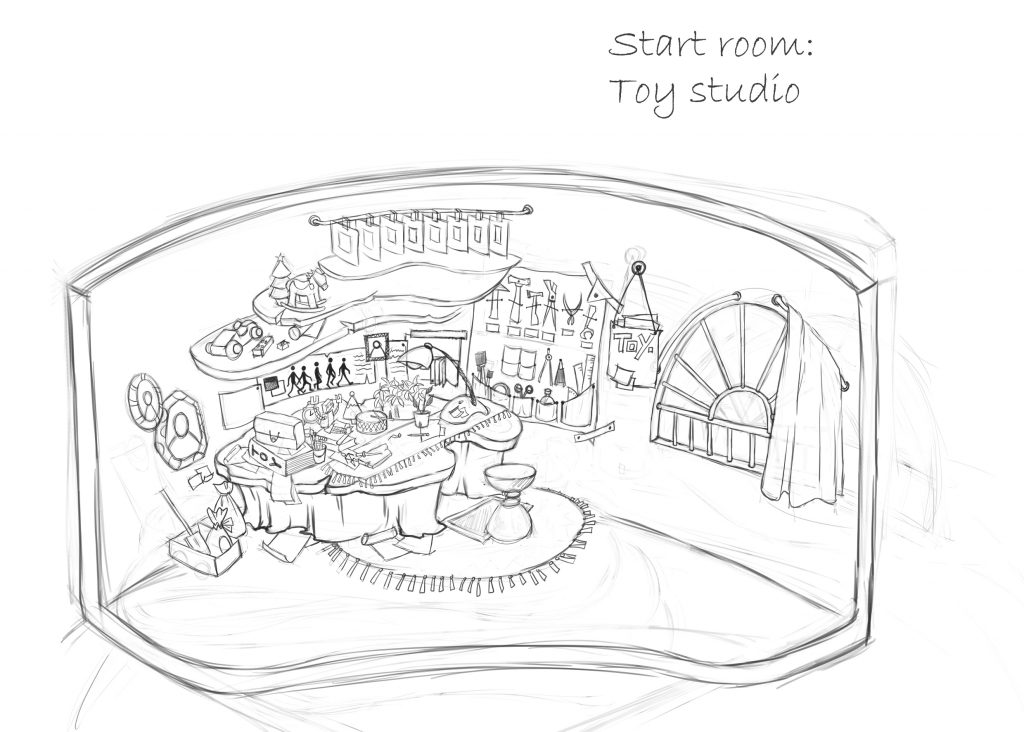
The story first and foremost takes place inside a toy workshop. In designing for 360, we had to decide what sort of room would lend itself to the visuals we were going for. Abandoning realism, we felt that removing all lines was in the best interest of keeping the eye on the action, and so our environment concept artist created a round room with a window, a desk, but no doors. We then did extensive research to settle ourselves on a time period. In this instance, we felt that pulling objects from the 1940’s would give a more classic feel. That time period was not essential for our story, but it did help us refine what sorts of toys, tools, and accouterments would match.
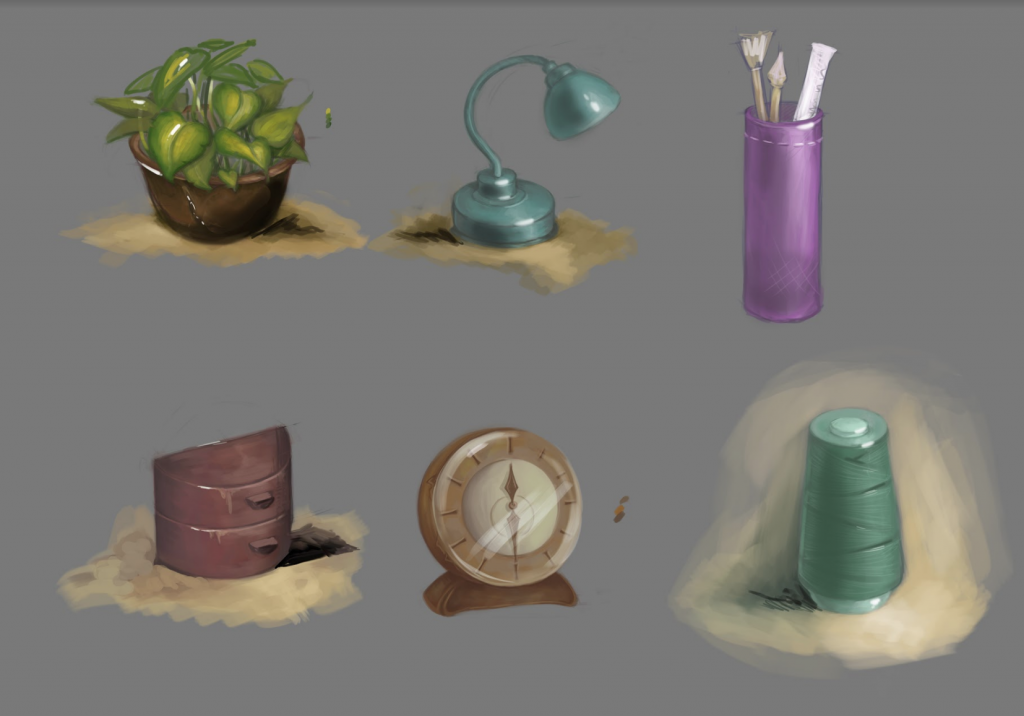
This is a selection of the objects that are in the space. All objects we knew needed to be identifiable as, if nothing else, objects that either belonged in a workshop or on a desk. In addition each object would transform into a parallel object representative of one of the three cultures, so we needed a precise number with physical variety in width and height.
India
The Indian Doll does a dance called Bharatanatyam. Victoria Peechatt, a member of the University of Pittsburgh’s Nrityamala dance troupe, consulted on the doll, and both choreographed and performed the dance we use in our final animation. Our design was inspired by paper maché Golu Dolls, so we wanted a bit of a sheen from the light and stippling in the texture. India was also the most complex in terms of iterations; At first we gave her mitten hands, only to learn that hands were essential to the storytelling aspect of the of Bharatanatyam. This increased the complexity of both her design and animation. Because Victoria’s hands could not be captured during the motion capture session, we had to video tape her dancing and animate the hands separately. This dance is also heavily reliant on the rhythm of foot stomping, so bells on the ankles were an added modeling and sound requirement. Much like the hand gestures, the bell sounds had to be recorded and synced separately.
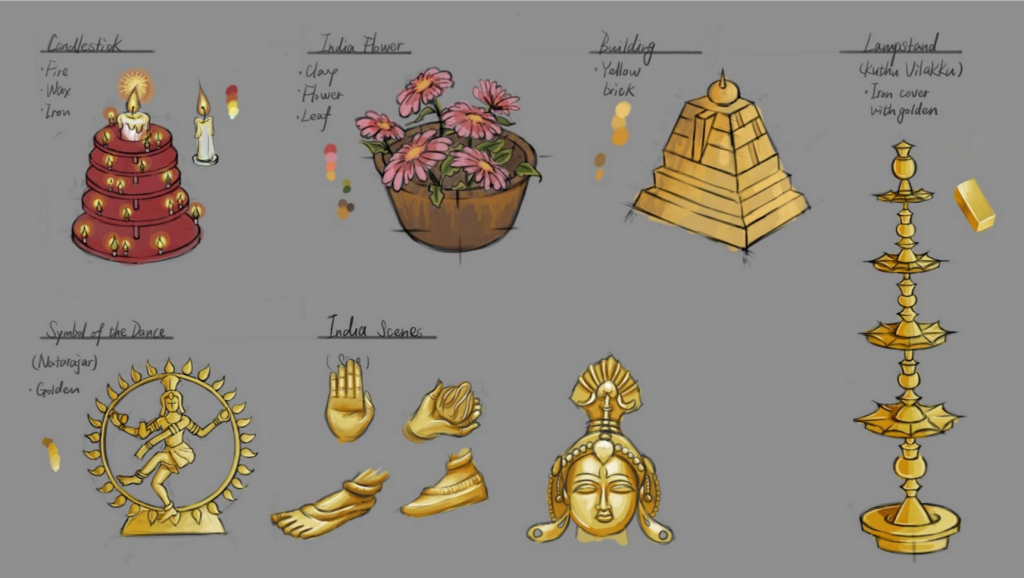
When selecting the objects for India, we wanted there to be a religious connotation that paralleled the dance itself, so all objects are associated with Shiva’s temple. While there are no flames on the final models, the objects feel like they glow because of how luminous the materials are.
Ghana
The African Studies Department and the African Music and Dance Ensemble at the University of Pittsburgh were instrumental in accomplishing the Ghanaian work. Combined with what we knew from references within the department and from past music our sound designer had studied, Youmoussa Camara and his students brought the Ghanaian doll to life through their drumming and dance. Dara Ikejani was kind enough to step into the motion capture studio, and her work brought so much energy to our little wooden doll.
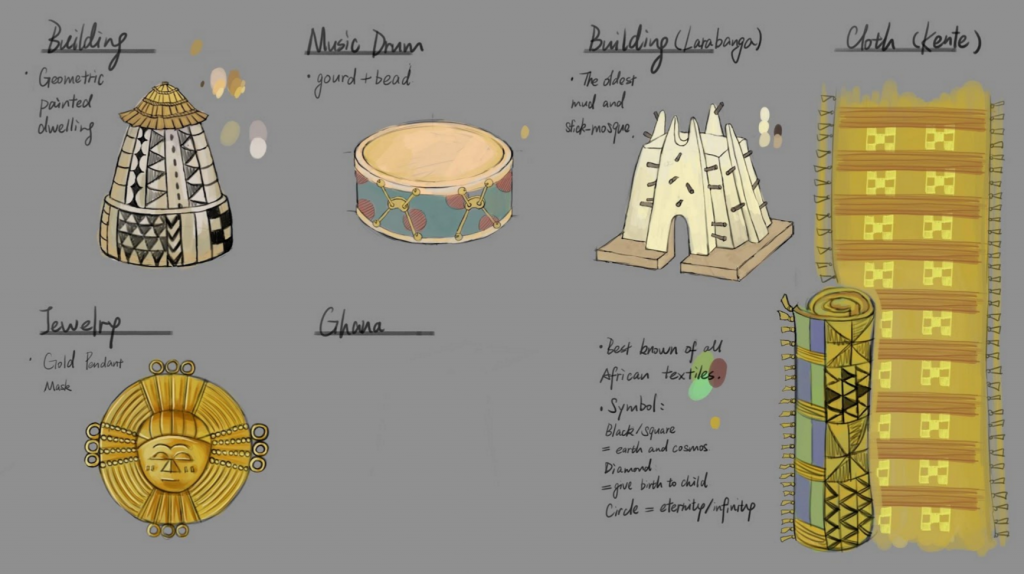
The objects in the Ghanaian environment were meant to create a feeling of dancing beside her. In addition to encircling the viewer in vibrant patterns, we mirrored West African architecture, including a miniature of a Ghanaian mosque in Mole National Park.
Brazil
Brazil was in many ways the most fun. Jean-Baptiste Meunier, an instructor of Capoeira Angola and the dancer for Brazil, made us very clear early on how off base our view of capoeira was. We thought he was going to wear a baggy shirt and sweatpants, but JB introduced us to the angoleiro, a man in all white who is a bit of a gangster, and we fell in love. We wanted our little Angoleiro Brazilian doll to be akin to a rag doll, so we were conscientious of how the knitted texture would appear in the final render.
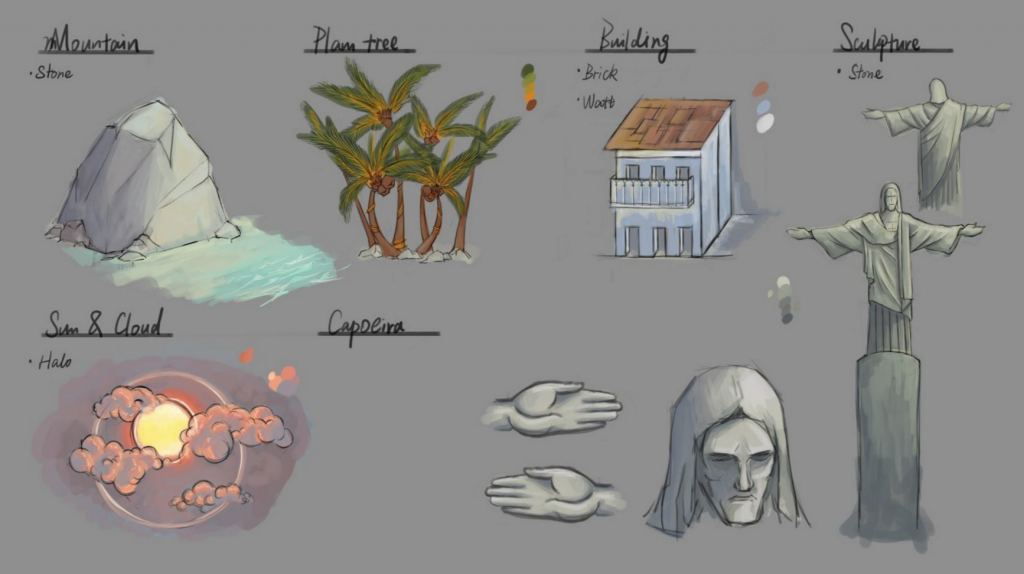
Because capoeira is Afro-Brazilian in origin, and Brazil as a whole is extremely diverse, we wanted to focus on making sure the viewer felt as though they had been invited to Rio de Janeiro. Many viewers felt that between the gorgeous objects, the cool lighting, and the fun dancing, that this was their favorite environment to be in.